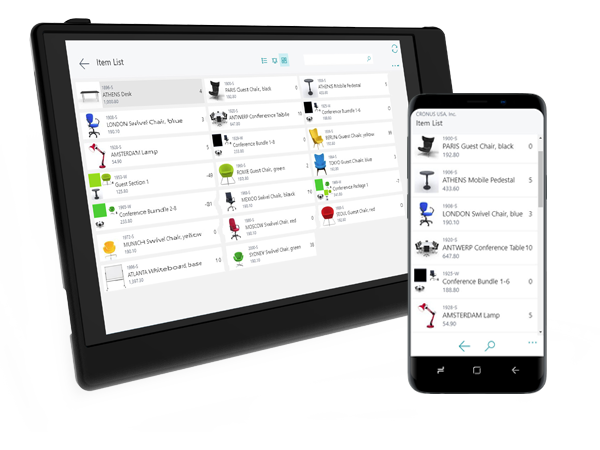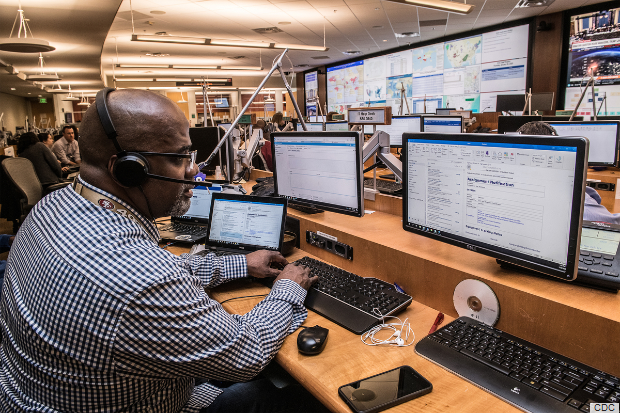When there’s a contagious disease outbreak, a natural disaster, or any other type of widespread emergency, IT team members may be required to work from home or at some other safe location until normal business operations can resume.
Maintaining productivity and ensuring that essential IT services continue functioning uninterrupted throughout the emergency period can be challenging for both IT leaders and staff. Here are seven tips that can help you keep key operations and activities humming along even during the worst of times.
1. Get organized
Most IT work can be handled remotely as long as the tasks don’t involve hands-on interactions with enterprise physical assets. “Design and planning meetings are still best done in person, but even these meetings can be done adequately from home with screen sharing and online whiteboard tools,” says Joe Wilson, owner of Volare Systems, a Denver-based custom software development company with largely remote staff.
Any organization possessing a strong set of norms and operating procedures should be able to quickly assemble a capable remote IT team, or transition into one says the CEO and Co-Founder of Growth Capital Group.
Patrick Costa, director of IT at medical cost-sharing program provider OneShareHealth, says the challenge of organizing a successful remote team is more a matter of leadership than technology. He recalls a time when a data corruption problem forced him to obtain rapid input from staff members in three separate locations. Costa decided that a conference call was the best way to handle the situation. “It took less than five minutes once we made the decision,” he recalls. “If you’re an IT leader who has a good relationship with your staff, then you can assemble your remote staff as quickly as you can your on-site staff.”
2. Select a strong leader
Depending on the IT department, a remote staff may have a single leader or several leaders responsible for specific units who report to a CIO or top IT manager. A team leader, regardless of his or her team’s scope or size, should never be selected solely based on technical expertise, cautions Allison St. John, co-founder, and chief learning officer at The Remote Leader Project, remote work instruction and support provider. “It’s most important that the team leaders have people skills so that the highly technical and most skilled people can continue to produce in their technical strength,” she explains.
Any team leader should possess a high level of social intelligence and strong collaboration skills, Woolley notes, but that goes double when all or the majority of team members work remotely.
“Research shows that the biggest problems come when a team is divided between some members who work remotely and some who are co-located,” Woolley says. “Those [leaders] who are physically co-located frequently forget to fill the remote members in on key details or fail to understand what [remote members] know or don’t know.”
3. Create a functional strategy
Woolley compares an IT organization facing an existential threat to a hospital staff that responds to a “code blue” alert. “When the [hospital] team enters the room, they have a set of pre-existing rules around who is going to be in charge, what other roles need to be filled, and what critical steps need to be performed,” she explains. Similarly, IT leaders need to have someone who can step forward to coordinate and facilitate a remote workforce.
Meet Karia, CTO of insurance plan comparison website operator The Zebra, stresses the need for the remote team to be given the full context, autonomy, and authority necessary to execute tasks quickly and effectively. “You should hold them accountable the way you hold the rest of your team accountable,” he says. “Agree on scope, time, and quality with the team and ensure you receive at least weekly updates.”
A well-constructed remote team should be able to handle virtually any task. Success is generally measured by determining which types of work need to be done synchronously with a high degree of collaboration, and which can be divided up and done more independently and asynchronously, Woolley notes. In either case, it’s important for all parties to unite on the same goals and objectives. When goals are unclear or conflicting, productive collaborative work will be difficult to achieve. “There are fewer opportunities to recognize and rectify unclear goals in remote work,” Woolley cautions.
4. Build tight coordination
When assembling the remote team, disruption can be minimized by creating a hierarchical structure that closely resembles its on-site counterpart. “Make sure you have the right people with the right expertise on the team — and ensure that the team knows who has what expertise so that it gets applied when needed,” Woolley advises.
The remote team also should be presented with a clear set of goals that all parties can understand and support. “If members are operating with a different understanding of goals and priorities, or maybe have conflicting goals because the team leader wants them to do one thing, but their boss wants them to do another, then that’s going to be a problem,” Woolley says.
Remote teams need to coordinate their attention, determine what they’re jointly working on, what they’re dividing up and doing separately, and how to draw together when necessary to address unexpected issues. Woolley says studies have shown that the most productive teams are characterized by “burstiness” — a period during which participants work independently, punctuated by periods of shared work. Such teams often exhibit a higher level of responsiveness.
“When someone sends a message, others respond right away,” Wooley notes. “By contrast, the less productive teams might exchange the same number of messages, but with bigger delays in-between.”
5. Use a common collaboration platform
For most IT staff members, the process of going remote is usually as simple as connecting a home desktop or laptop computer into a reliable internet connection. “You may need a VPN running to access your company network, but that should be about it,” Wilson says.
The biggest challenge lies in selecting a collaboration platform that meets team members’ needs and encourages vigorous interactions. Zoom and Slack are the most popular remote collaboration tools, Wilson observes. There are also a number of online task boards and project management tools to choose from. “For developers, code is usually stored in GitHub, GitLab, or Bitbucket,” he notes.
The good news is that many, if not most, IT organizations already use several collaboration tools on a regular basis within the office. “You likely will not need to change tools when working from home,” Wilson says.
6. Don’t neglect security
When shifting staff to full-time remote work, it’s necessary to ensure that each individual has the ability to reliably and securely access the enterprise systems and resources they need to remain productive. An important first step is deploying commonsense remote access safeguards, such as positioning critical systems and data behind a VPN, advises Kevin Ruthen, CTO at Support.com, an outsourced call center and direct-to-consumer technical support provider.
Ruthen also suggests using multi-factor authentication to validate employee identities and prevent unauthorized access. “It’s also important to … require that any device that connects to the corporate network has the latest anti-virus, spyware, and malware protection,” he says. “This includes any personal devices that employees may use when working remotely.”
7. Optimize communication
When team members work in isolation, there’s always a risk that misassumptions and misunderstandings will spiral out of control to the extent that it will affect performance and productivity. People working at home lose access to the observations, insights, and updates that staffers routinely exchange in the lunchroom or around the water cooler. It’s common for remote workers to overestimate what colleagues at another location know, or to assume that they see things exactly the same way, Wooley explains. “Trying to do things remotely without communicating enough is bound to leave a lot of gaps in understanding,” she adds.
Live conference calls, while far from being a perfect substitute for routine office banter, can still go a long way toward squelching rumors and helping team members stay on top of projects and current developments. “The biggest mistake remote teams make is leaving their web cameras off,” Wilson says. “You and your co-workers will miss having as close of a connection if you can’t see each other.”
Yet Woolley downplays video’s ability to reinforce teamwork. “As it turns out, video conferencing is less important than some assume,” she notes. “My colleagues and I conducted a study in which we found that teams that communicated via audio-only were just as collectively intelligent as teams that used videoconferencing and, in some ways, the video detracted from the quality of the collaboration.”
Click to talk with an expert today: https://wa.me/2348139319159
You can walk into any of our experience centers to urge firsthand experience on all our platforms.
You can Island Location: 7b Dr. S Ezekuse Close, Lekki Phase 1, Lagos
Mainland Location: WorkStation Office, Maryland Mall, Anthony Lagos.
Abuja Location: 167, Adetokunbo Ademola Crescent, Wuse Abuja.
At Growth Capital Group, we grow with you!
Recent Posts
- How Countries are Preparing, Coping, and Planning for Recovery: How EduBase is helping Schools in this Pandemic Era.
- Why it Makes Sense to Move your Retail Management Software to the Cloud
- How EduPoint; One of Growth Capital’s Port-folio Companies is Improving the Way Students are Learning in this Pandemic
- 4 Omni-Channel Failures That Could Easily Have Been Avoided With the Right Management System
- TeleHealth in COVID-19: How e-Doctor is helping Hospitals.








Recent Comments